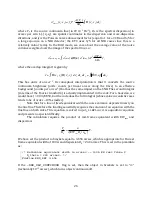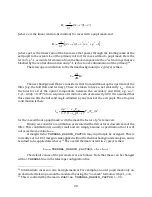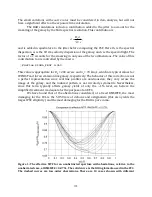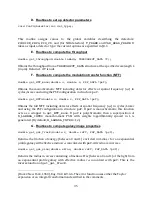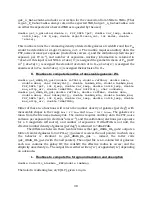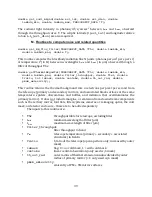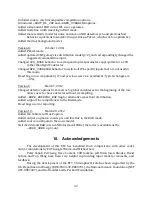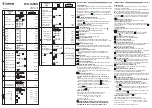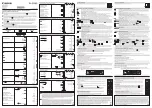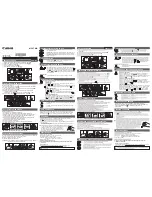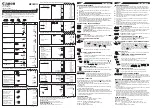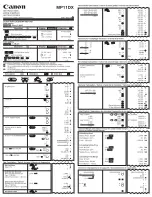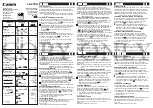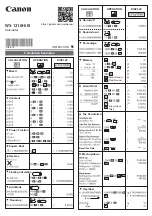
38
get_n_Detectable
includes a correction for the conversion from SNRe to SNRo. (That
is,
get_P_Detectable
always cuts on the expected SNR, but
get_n_Detectable
cuts
on either the expected or observed SNR as requested by the user.)
double get_n_galaxies(double z, PSF_DATA *psf, double var_1exp, double
calib_1exp, int N_exp, double significance_cut, int model, double
*stats);
This routine returns the commoving density of detectable galaxies at redshift
z
and flux
F
Hα
would be detectable at
significance_cut
σ. The routine requires ancillary data: the
PSF, noise variance per exposure (in electrons
2
arcsec
−2
), and the calibration (electrons per
exposure per W m
−2
), and number of exposures. Ancillary information is returned in
*stats
if this input is not NULL:
stats[0]
is assigned the geometric mean of
F
Hα
(in W
m
−2
);
stats[1]
is assigned the standard deviation of ln
F
Hα
;
stats[2]
is assigned the
skewness of ln
F
Hα
; and
stats[3]
is assigned the kurtosis of ln
F
Hα
.
K. Routines to compute densities of observable galaxies: WL
double get_dNdA_WL_gal2(double reffmin, double reffmax, double zmin,
double zmax, char GalaxyCat[], double lambda_min, double lambda_max,
PSF_DATA *psf, int N_exp, double var_1exp, double calib_1exp, double
max_ellip_err, double *dNeffdA, char OutFile[], char outmode);
double get_dNdA_WL_gal(double reffmin, double reffmax, double zmin,
double zmax, char GalaxyCat[], double lambda_min, double lambda_max,
PSF_DATA *psf, int N_exp, double var_1exp, double calib_1exp, double
max_ellip_err, double *dNeffdA);
Either of these two functions will return the number density of galaxies (per deg
2
) with
measurable shapes in the range
z
min
<
z
<
z
max
and
r
eff,min
<
r
eff
<
r
eff,max
. The galaxies are
taken from the file name
GalaxyCat
. The routine requires ancillary data: the PSF, noise
variance per exposure (in electrons
2
arcsec
−2
), and the calibration (electrons per exposure
for a 0 magnitude AB source), and number of exposures. If
dNeffdA
is not null, the
effective number density of galaxies (per deg
2
) is returned to
*dNeffdA
.
The difference between these two functions is that
get_dNdA_WL_gal2
outputs a
table of resolved galaxies to
OutFile[]
(unless it receives the null pointer, in which case
the behavior is identical to
get_dNdA_WL_gal
– indeed, the latter calls
get_dNdA_WL_gal2
with the null pointer). The output file is a 4-‐column list of galaxies:
each row contains the galaxy ID; the redshift; the effective radius in arcsec; and the
ellipticity uncertainty σ
e
. The output file is either written (‘
w
’) or appended (‘
a
’) depending
on
outmode
.
L. Routines to compute the foreground radiation and absorption
double Galactic_Alambda__EBV(double lambda);
The Galactic reddening law,
A
λ
/
E
(
B
−
V
), given λ in μm.



